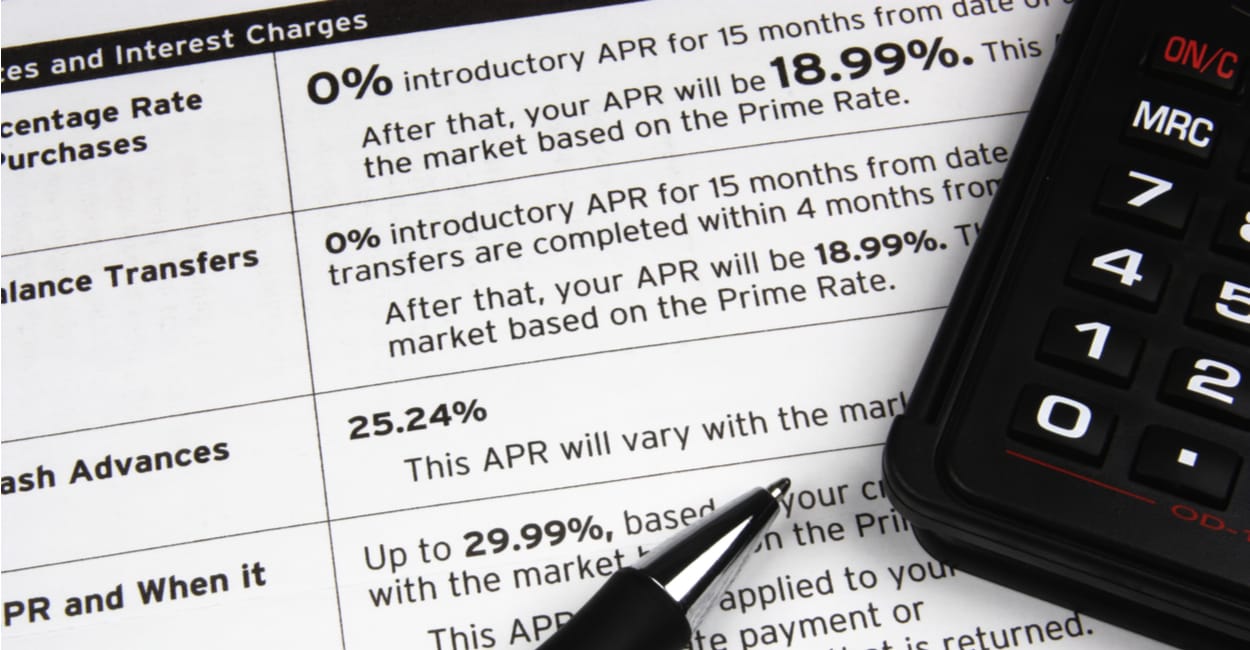Introduction
When shopping for a loan, it is crucial for consumers to have access to accurate and transparent information about the terms and conditions of their borrowing arrangement. This is where the Truth-in-Lending Act (TILA) comes into play. TILA is a federal law enacted in the United States to protect consumers in their financial transactions by ensuring that they receive full disclosure and clear information about various aspects of the loan process.
The main objective of Truth-in-Lending is to promote transparency and fairness in lending practices. By providing consumers with comprehensive and accurate information, TILA empowers individuals to make informed decisions about their borrowing options. From mortgages and student loans to credit cards and auto loans, the benefits of Truth-in-Lending extend across a wide range of financial products.
In this article, we will delve into the ways Truth-in-Lending benefits consumers when shopping for a loan. By understanding these advantages, consumers can be more confident and knowledgeable in their financial decisions, avoiding hidden costs and unfair loan practices. So let’s explore the key ways in which Truth-in-Lending empowers and protects consumers in their loan journey.
What is Truth-in-Lending?
Truth-in-Lending, also known as TILA, is a federal law in the United States that was passed in 1968 to protect consumers in their financial transactions. The purpose of this legislation is to ensure that borrowers receive clear and accurate information about the terms and costs associated with their loans. Under TILA, lenders are required to disclose crucial details to borrowers, including the annual percentage rate (APR), finance charges, total loan amount, repayment terms, and any other fees or costs involved.
The concept of Truth-in-Lending is rooted in the belief that consumers have the right to be informed and make educated decisions when borrowing money. By providing comprehensible and standardized loan information, TILA helps eliminate deceptive practices and promotes fair lending in the marketplace. The law covers a variety of credit transactions, including mortgages, credit cards, personal loans, car loans, and more.
TILA implements regulations that lenders must follow to ensure proper disclosure. For example, lenders must provide borrowers with a Truth-in-Lending disclosure statement, also known as the TIL statement, before the loan is finalized. This document outlines the terms, costs, and other relevant information about the loan in a clear and uniform manner, making it easier for consumers to understand and compare different loan offers.
It is important to note that Truth-in-Lending does not dictate the terms or interest rates that lenders can offer. Rather, it aims to ensure that lenders provide accurate and transparent information so that borrowers can make informed decisions. Consequently, borrowers have the ability to compare loan offers from different lenders and select the option that best suits their financial situation and needs.
Overall, the objective of Truth-in-Lending is to empower consumers by giving them the knowledge and tools necessary to enter into loan agreements with confidence and clarity. This legislation plays a vital role in creating a fair and transparent lending marketplace and is instrumental in protecting individuals from predatory lending practices. By understanding the principles and benefits of Truth-in-Lending, consumers can navigate the loan process more effectively and make informed financial decisions that align with their long-term goals.
Full Disclosure of Terms and Conditions
One of the key benefits of Truth-in-Lending is its requirement for lenders to provide full disclosure of the terms and conditions associated with a loan. Prior to the implementation of TILA, borrowers often faced hidden fees, confusing loan terms, and undisclosed costs, which made it difficult to accurately compare loan options and understand the true cost of borrowing. However, with the advent of Truth-in-Lending, borrowers now have access to comprehensive and transparent information that allows them to make more informed decisions.
Under TILA, lenders are obligated to furnish borrowers with a Truth-in-Lending disclosure statement. This statement must be delivered to borrowers before the loan is finalized and provides a breakdown of the key terms and costs of the loan. It includes information such as the loan amount, the annual percentage rate (APR), the total charge for credit, the payment schedule, and any additional fees or charges associated with the loan.
By receiving this detailed disclosure statement, borrowers have a clear understanding of the financial implications of taking on the loan. They can evaluate the total cost of borrowing, assess their ability to make repayments, and identify any hidden fees that might have been overlooked. This transparency helps borrowers avoid unpleasant surprises down the line and allows for more effective financial planning.
Moreover, the disclosure statement provided under Truth-in-Lending gives borrowers an opportunity to compare loan offers from various lenders. With all the relevant information presented in a standardized format, borrowers can evaluate the terms and conditions of different loans side by side. This empowers borrowers to make choices based on their individual needs and preferences, ensuring that they secure the most favorable loan option available to them.
By mandating full disclosure of terms and conditions, Truth-in-Lending enhances consumer protection and promotes fair lending practices. It enables borrowers to make informed decisions about their loans, understand the costs involved, and avoid unnecessary financial hardships. Ultimately, full disclosure empowers borrowers to take control of their financial future and make financially responsible choices.
Clear and Uniform Information
Another significant benefit of Truth-in-Lending is that it ensures borrowers receive clear and uniform information about the terms and conditions of their loans. Prior to the enactment of TILA, lenders often used confusing and complex language in loan agreements, making it challenging for borrowers to fully comprehend the obligations they were undertaking.
Under TILA, lenders are required to use clear and straightforward language in their loan disclosures. This means that borrowers can easily understand the terms and conditions of the loan, including the interest rates, payment schedule, and any potential penalties or fees. This clarity allows borrowers to fully grasp the financial commitment they are making and make informed decisions about their borrowing needs.
In addition to clarity, TILA also emphasizes the importance of providing uniform information. This means that the information presented to borrowers must be standardized across different lenders. By establishing a consistent format for loan disclosures, Truth-in-Lending ensures that borrowers can easily compare different loan offers and make meaningful comparisons.
The use of uniform information in loan disclosures also promotes competition among lenders. When borrowers can easily compare the terms and costs of different loans, lenders are incentivized to offer competitive rates and more favorable terms. This benefits borrowers by giving them access to a wider range of choices and potentially better loan options.
Furthermore, the standardized information mandated by Truth-in-Lending allows borrowers to more effectively navigate the loan process. With consistent terms and easily understandable information, borrowers can better evaluate their financial capabilities and determine if a particular loan aligns with their needs and repayment capacity. This helps prevent situations where borrowers are unable to make payments due to unclear or misleading loan terms.
In summary, the clear and uniform information provided under Truth-in-Lending enhances consumer protection and promotes fairness in lending. By ensuring borrowers receive straightforward and standardized loan disclosures, TILA allows individuals to fully understand the terms and costs associated with their loans. This empowers borrowers to make informed decisions, avoid potential pitfalls, and choose loan options that best suit their financial needs and goals.
Protection against Unfair Lending Practices
Truth-in-Lending provides crucial protection to borrowers by safeguarding them against unfair lending practices. Before the implementation of TILA, many consumers fell victim to deceptive tactics and predatory lending practices, which led to financial harm and hardship. However, Truth-in-Lending helps ensure that lenders operate ethically and transparently, preventing borrowers from falling into exploitative loan arrangements.
One significant aspect of protection provided by TILA is the requirement for lenders to disclose all costs associated with the loan. This includes not only the interest rate but also any additional fees, such as origination fees, closing costs, and prepayment penalties. By mandating full disclosure of these charges, TILA makes it harder for lenders to conceal hidden costs that can significantly impact the total amount the borrower will repay.
Furthermore, TILA enforces regulations against certain unfair practices, such as the bait-and-switch tactic. This practice involves initially advertising a loan with attractive terms and then presenting the borrower with different, less favorable terms when finalizing the agreement. Under Truth-in-Lending, lenders are required to honor the terms initially presented to the borrower, preventing them from misleading borrowers through false advertising.
In addition, TILA helps protect borrowers from deceptive or misleading loan terms. The law requires lenders to use clear and understandable language in loan agreements, preventing the use of confusing or misleading terms that could potentially harm borrowers. By promoting transparency and accuracy in loan documents, TILA helps borrowers fully understand their rights, obligations, and the future costs they will incur.
Moreover, TILA imposes restrictions on abusive lending practices, such as excessive interest rates or unfair loan terms that exploit borrowers. The law sets limitations on interest rates, fees, and other charges, ensuring that borrowers are not subjected to unreasonable or exploitative loan conditions. This protection helps vulnerable individuals avoid financial harm and maintains a level playing field in the lending industry.
Overall, Truth-in-Lending acts as a shield against unfair lending practices, promoting transparency, fairness, and ethical conduct in the lending marketplace. By requiring lenders to disclose all costs, preventing deceptive practices, and imposing regulations on lending terms, TILA helps ensure that borrowers are not taken advantage of. The protection offered by TILA gives consumers the confidence and security to engage in loan agreements with trust and peace of mind.
Avoidance of Hidden Costs and Fees
Hidden costs and fees can catch borrowers off guard and significantly impact the affordability of a loan. However, one of the key benefits of Truth-in-Lending is that it helps borrowers avoid hidden costs and fees by requiring lenders to fully disclose all charges associated with the loan. This transparency empowers borrowers to make more informed decisions and protect themselves from unexpected financial burdens.
Under TILA, lenders are required to provide borrowers with a Truth-in-Lending disclosure statement, which outlines all costs and fees associated with the loan. This disclosure statement includes not only the interest rate but also any additional charges, such as origination fees, appraisal fees, title fees, and closing costs. By receiving this comprehensive breakdown of costs, borrowers can assess the true affordability of the loan and compare it with other loan options. This eliminates the risk of encountering hidden fees that could potentially lead to financial distress in the future.
Furthermore, Truth-in-Lending prohibits undisclosed or hidden fees from being added to the loan without the borrower’s knowledge. This prevents lenders from introducing additional costs during the loan process and ensures that borrowers are not caught off guard by unexpected charges. By mandating transparency, TILA promotes fair and honest lending practices that protect borrowers from excessive fees and hidden costs.
In addition, Truth-in-Lending requires lenders to disclose the annual percentage rate (APR) of the loan. The APR represents the true cost of borrowing since it includes both the interest rate and any additional fees. By considering the APR, borrowers can accurately compare different loan options and assess which one offers the most favorable terms. This allows borrowers to make informed decisions based on the real cost of the loan and avoid being deceived by lenders promoting low-interest rates but compensating through hidden fees.
By promoting upfront disclosure of costs and fees, Truth-in-Lending empowers borrowers to navigate the loan process with transparency and confidence. Borrowers can fully understand the financial commitment they are undertaking and evaluate the total cost of the loan. This information allows borrowers to make financially sound decisions and choose loan options that align with their budget and long-term financial goals.
In summary, Truth-in-Lending plays a vital role in helping borrowers avoid hidden costs and fees. By requiring lenders to disclose all charges associated with the loan, borrowers can make informed decisions based on full transparency. The elimination of hidden costs and fees protects borrowers from unforeseen financial burdens and ensures that they can confidently enter into loan agreements without fear of hidden surprises.
Ability to Compare Loan Offers
A major advantage of Truth-in-Lending is that it empowers borrowers with the ability to compare loan offers from different lenders. This comparison allows borrowers to make informed decisions and select the loan option that best meets their needs and financial circumstances.
Under Truth-in-Lending, lenders are required to provide borrowers with a standardized disclosure statement that includes important information about the loan. This information includes the loan amount, interest rate, repayment terms, and any additional fees or charges associated with the loan. By presenting this information in a clear and uniform manner, borrowers can easily compare the terms and costs of different loan offers side by side.
Having access to standardized information enables borrowers to evaluate the true cost of borrowing from various lenders. Comparing interest rates and fees allows borrowers to identify the most affordable option and choose a loan that fits their budget. By considering all the factors, borrowers can make a well-informed decision that aligns with their financial goals and minimizes the overall cost of the loan.
In addition to comparing the costs, borrowers can also evaluate the repayment terms offered by different lenders. This includes the length of the loan, the frequency of payments, and any flexibility options such as early repayment or refinancing. By comparing these factors, borrowers can find a loan that not only offers attractive rates but also provides repayment terms that suit their financial situation and flexibility needs.
Comparing loan offers not only helps borrowers choose the most suitable option but also creates a more competitive lending market. Lenders are compelled to offer more competitive interest rates and terms to attract borrowers. This competition benefits borrowers by providing them with a wide range of loan options to choose from, ensuring they can select the most advantageous offer available.
Furthermore, the ability to compare loan offers allows borrowers to negotiate with lenders. Armed with knowledge about competitive rates and terms, borrowers can use this leverage to negotiate better terms with the lender of their choice. This negotiation power gives borrowers the opportunity to secure better loan terms, potentially saving them money in the long run.
In summary, Truth-in-Lending provides borrowers with the valuable ability to compare loan offers from different lenders. By presenting standardized information about loan terms and costs, borrowers can make informed decisions, choose the most affordable loan option, and negotiate advantageous terms. This transparency, competition, and negotiation power empower borrowers to find loans that best fit their needs and financial goals.
Early Awareness of Repayment Obligations
One of the significant benefits of Truth-in-Lending is that it provides borrowers with early awareness of their repayment obligations. Understanding the repayment terms and being aware of the future financial commitment is crucial for borrowers to plan their finances effectively and avoid potential difficulties.
Under Truth-in-Lending, lenders are required to disclose the repayment terms of the loan in a clear and transparent manner. This information includes the number of payments, the frequency of payments, and the total repayment amount. By receiving this information upfront, borrowers can accurately assess the affordability of the loan and plan their budget accordingly.
Early awareness of repayment obligations allows borrowers to make informed decisions about their loan options. By knowing the amount and frequency of payments, borrowers can determine if the loan aligns with their current and projected income. This knowledge helps borrowers avoid taking on loans that may burden their financial situation or lead to potential repayment difficulties in the long run.
Additionally, the early awareness of repayment obligations allows borrowers to evaluate the long-term financial impact of the loan. By considering the total repayment amount, including interest and fees, borrowers can determine the actual cost of the loan over its duration. This information helps borrowers compare different loan offers and select the option that offers the most favorable repayment terms, minimizing the overall financial burden.
Furthermore, early awareness of repayment obligations enables borrowers to plan and allocate their resources responsibly. By understanding the timing and amounts of loan repayments, borrowers can incorporate these obligations into their monthly budget and ensure timely payments. This proactive approach helps borrowers avoid missed or late payments, which can lead to additional fees, penalties, and potentially harm their credit score.
In summary, Truth-in-Lending provides borrowers with early awareness of their repayment obligations, allowing them to plan their finances effectively and avoid potential difficulties. By disclosing the repayment terms upfront, borrowers can make informed decisions, evaluate the long-term financial impact of the loan, and allocate their resources responsibly. This transparency and early awareness empower borrowers to manage their loan obligations effectively, promoting financial stability and responsible borrowing practices.
Prevention of Predatory Lending
One of the crucial benefits of Truth-in-Lending is its role in preventing predatory lending practices. Predatory lending refers to unethical practices that take advantage of vulnerable borrowers, often resulting in financial hardship and long-term detrimental effects. Truth-in-Lending plays a key role in safeguarding borrowers by promoting transparency, fairness, and responsible lending practices.
Predatory lenders typically use deceptive tactics to lure borrowers into unfavorable loan arrangements. They may hide excessive fees, charge exorbitant interest rates, or employ aggressive and misleading marketing strategies. However, Truth-in-Lending acts as a protective shield for borrowers by requiring lenders to disclose all costs, fees, and terms associated with the loan in a clear and standardized manner.
By ensuring full disclosure, borrowers are made aware of all the potential pitfalls and risks associated with the loan. They can assess the affordability of the loan, identify any hidden charges, and make informed decisions. This transparency eliminates the opportunity for predatory lenders to exploit borrowers through hidden fees and misleading terms.
Furthermore, Truth-in-Lending sets limitations on certain loan terms and practices, preventing lenders from imposing unfair conditions. For example, TILA prohibits lenders from charging excessive interest rates, imposing prepayment penalties, or including balloon payments that may trap borrowers in a cycle of debt. These regulations ensure that borrowers are protected from loans that may lead to financial distress or be unjustifiably burdensome.
Truth-in-Lending also encourages responsible lending practices by promoting affordability assessments. Lenders are required to assess the borrower’s ability to repay the loan, taking into account their income, expenses, and other financial obligations. This evaluation helps prevent borrowers from obtaining loans that they cannot realistically repay, reducing the risk of default and potential financial hardship.
Moreover, Truth-in-Lending includes provisions that protect borrowers during the loan origination process. For instance, it outlines the right of rescission, which allows borrowers a limited window of time to cancel a loan agreement without penalty. This provision gives borrowers a safety net to reconsider their decision and protects them from being trapped in unfavorable loan terms.
Overall, Truth-in-Lending serves as a powerful tool in preventing predatory lending practices. By requiring transparency, setting limitations on loan terms, promoting affordability assessments, and providing borrower protections, it creates a fair and regulated lending environment. By empowering borrowers with access to clear and accurate loan information, Truth-in-Lending helps safeguard individuals from becoming victims of predatory lending and ensures that lenders adhere to ethical and responsible lending practices.
Consumer Empowerment through Informed Decision-Making
Truth-in-Lending empowers consumers by providing them with the information and tools necessary to make informed decisions about their borrowing options. By promoting transparency and disclosure, Truth-in-Lending ensures that borrowers have access to accurate and comprehensive information about loan terms, costs, and risks. This empowerment allows consumers to navigate the loan market with confidence and choose loan options that best align with their financial goals and circumstances.
One of the key ways in which Truth-in-Lending empowers consumers is through the provision of standardized loan disclosures. Lenders are required to present loan terms and costs in a clear and uniform manner, making it easier for borrowers to understand and compare different loan offers. This standardized information enables borrowers to make meaningful comparisons, evaluate the affordability of loans, and identify the most favorable terms.
In addition, by mandating full disclosure of costs and fees, Truth-in-Lending helps borrowers avoid hidden charges and potential financial pitfalls. The comprehensive disclosure statement provided by lenders allows borrowers to assess the true cost of borrowing, identify any potential risks, and make informed decisions about their financial commitments.
Furthermore, Truth-in-Lending enhances consumer empowerment by promoting competition among lenders. The transparent and standardized information provided under TILA allows borrowers to shop around and compare loan offers from different lenders. This competition creates incentives for lenders to offer better terms, lower interest rates, and improved customer service, benefiting borrowers through increased choice and potentially more favorable loan options.
Moreover, Truth-in-Lending encourages responsible borrowing by incorporating affordability assessments into the loan process. By considering a borrower’s ability to repay the loan, lenders can help prevent borrowers from taking on excessive debt and experiencing financial distress. This promotes responsible decision-making and empowers borrowers to choose loans that are within their means.
Additionally, the transparency and information provided by Truth-in-Lending empower consumers to protect themselves from predatory lending practices. By being fully aware of loan terms, borrowers can identify and avoid loans that may exploit them through excessive fees, excessive interest rates, or unfair loan conditions. This knowledge allows borrowers to make wise choices and avoid potential financial harm.
In summary, Truth-in-Lending empowers consumers through informed decision-making. By providing standardized and comprehensive loan disclosures, promoting competition among lenders, incorporating affordability assessments, and safeguarding borrowers from predatory practices, TILA ensures that consumers have the necessary information and tools to choose loan options that best meet their needs. This empowerment allows consumers to make financially sound decisions, protect themselves from potential risks, and ultimately achieve their financial goals.
Conclusion
In conclusion,
Truth-in-Lending plays a critical role in protecting and empowering consumers when shopping for loans. By requiring lenders to provide full disclosure of terms and conditions, clear and uniform information, and protection against unfair lending practices, Truth-in-Lending ensures that borrowers have access to transparent and accurate loan information. This enables consumers to make informed decisions, avoid hidden costs and fees, and compare loan offers effectively.
With the early awareness of repayment obligations and prevention of predatory lending, borrowers can plan their finances responsibly and protect themselves from exploitative loan practices. The ability to compare loan offers fosters competition among lenders, offering borrowers a wider range of choices and potentially better loan options.
Consumer empowerment through informed decision-making is the essence of Truth-in-Lending. By providing borrowers with comprehensive information, TILA gives them the knowledge and confidence to make sound financial choices and protect their interests in the loan market.
It is essential for borrowers to understand their rights under Truth-in-Lending and leverage the benefits it offers. By being aware of the disclosure requirements and using the information provided to their advantage, borrowers can navigate the loan process with transparency and make well-informed decisions that align with their financial goals.
Overall, Truth-in-Lending is a crucial regulatory framework that promotes transparency, fairness, and responsible lending practices. It empowers consumers, protects their interests, and ensures they have the necessary tools to make informed financial decisions when shopping for a loan. By harnessing the benefits of Truth-in-Lending, borrowers can navigate the loan market with confidence, secure favorable loan terms, and achieve greater financial well-being.

























